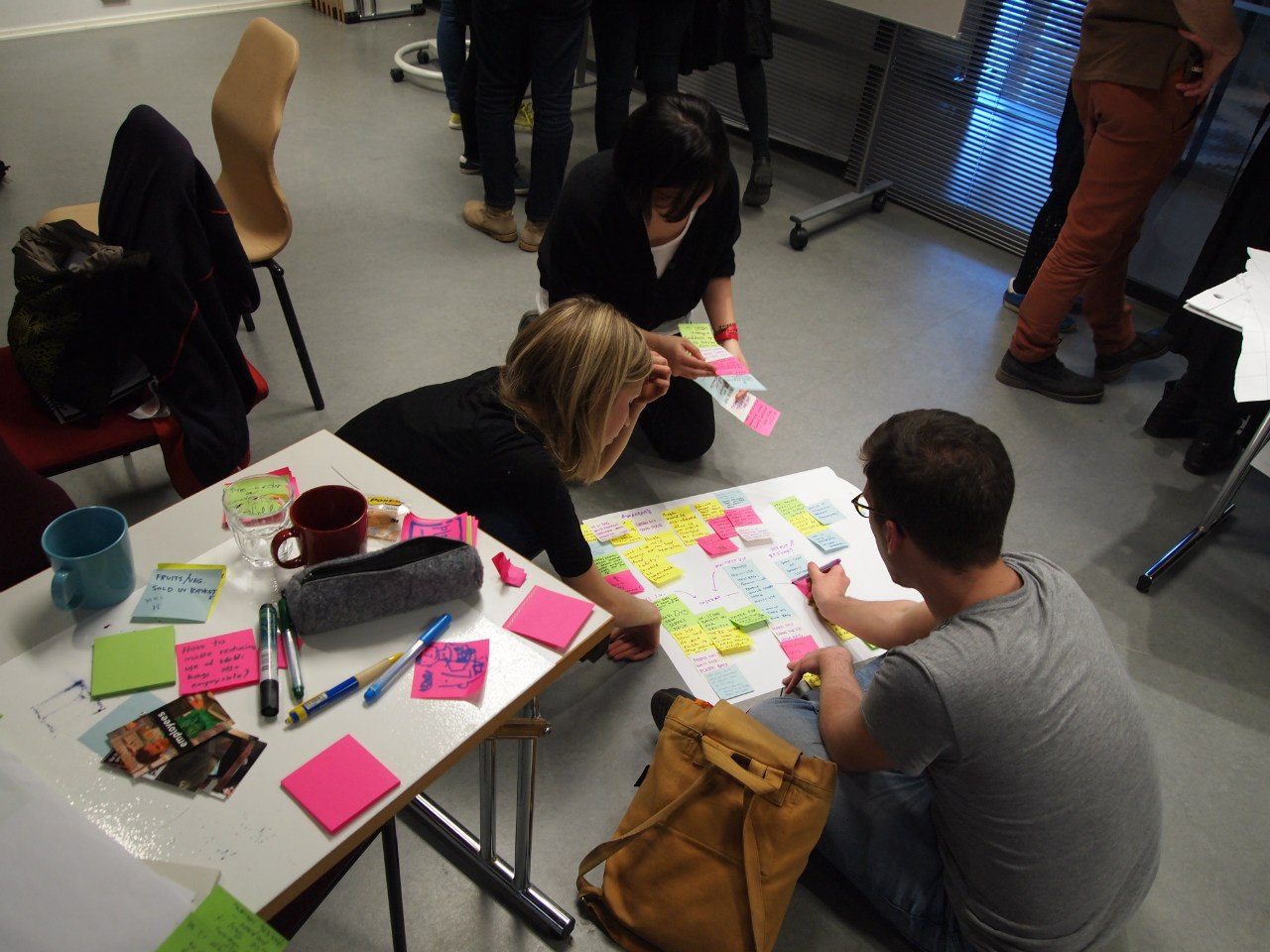Editor’s note: We offered this blog as a platform to the DfG course participants who are documenting the DfG course for readers to get a glimpse of how things went. This is one such post by Plastic Bags – Retail Experience team
HCD Introduction
Human-Centered Design (HCD): generating new solutions and opportunities driven by the needs, desires, and context of the people which will be the users of the design. Essential in this sense is Empathy: “the ability to step into someone else’s shoes and to understand them through their experiences”. HCD prevents designers from diving into the design process (“the how”) without fully exploring and understanding the user and user context (“the why”).
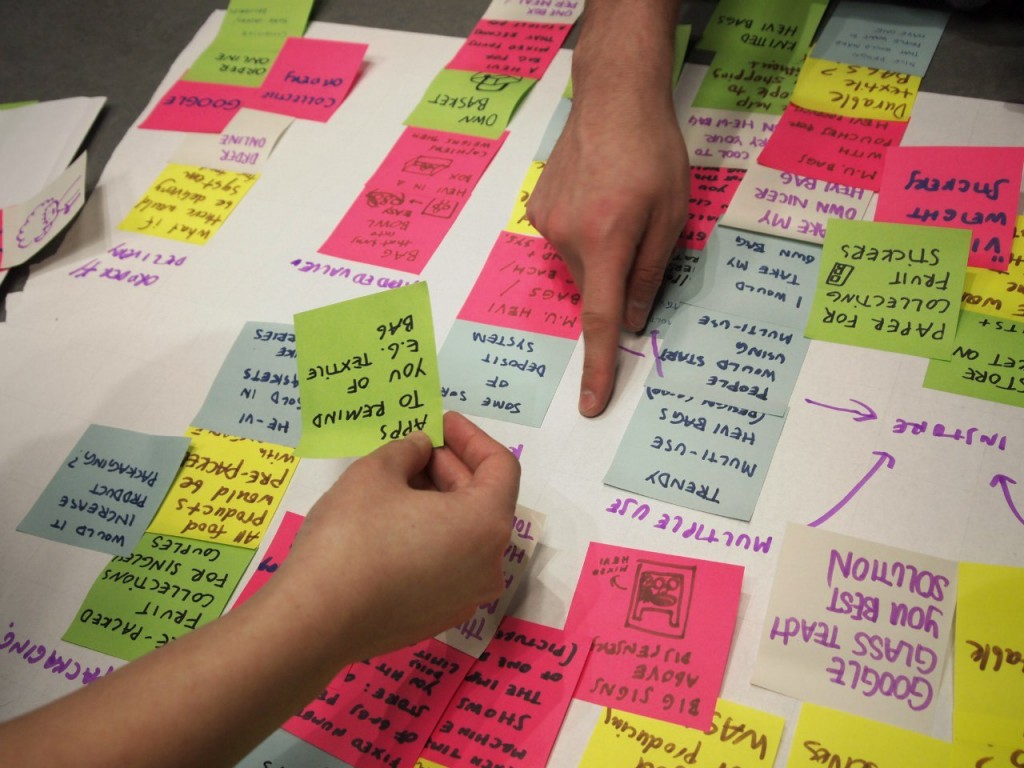
Planning the research
The HCD Block started with planning our design research. Design research is fundamental to creating solutions in line with actual human needs, explicit and tacit, and the context around which the design will be used. A well-planned design research was therefore critical for both of the DfG umbrella themes and their sub-groups. At the beginning of the block we learned about different design research methods, each appropriate for addressing different research questions. All DfG project groups were therefore asked to conduct separate researches but to share their insight with each other.
We were encouraged to combine two or more research methods in order to get a truly holistic view of the issue. It was also stressed that in many cases it is crucial to do two or more research rounds that apply different methods. Often the first research round provides new information that can be used in planning the next ones. Planning our first research, let alone the second round, was challenging due to our limited pre-understanding of the DfG cases. Challenges are, however, unexplored opportunities and all the groups put their shoulders on the wheel with a great enthusiasm.

On of the most important teachings of Juha Kronqvist in his research planning lecture was that what people say or claim is usually only the top of the iceberg. In order to see what is below the surface it is vital to do contextual observations. Interviews are an important research method but only by observing one is able to uncover tacit needs and gain valuable information on how people are actually behaving. As both of the DfG projects were concerned with behavioral norms and unconscious decision-making, it was important for all of the groups to include observations to their design researches.
Research phase
After planning, two days of the HCD block were reserved for field work. For some groups it meant meetings with experts, whereas others spent the time observing and interviewing people on the spot. The aim was the same: deepen the understanding of the topic and step out of the comfort zone by going outside the university bubble. Fieldwork was supposed to confirm or refute our pre-assumptions give new perspectives to the problem – to create knowledge by experience.
Field experiences proved that when facing the target of observation or interviews, it is not only important to be well prepared, but also to be flexible and adapt to reality. Piloting the questions first may be beneficial in order to spot possible problems beforehand. In structured interviews, for example, some questions may turn out to be overlapping, too obvious or difficult to answer.
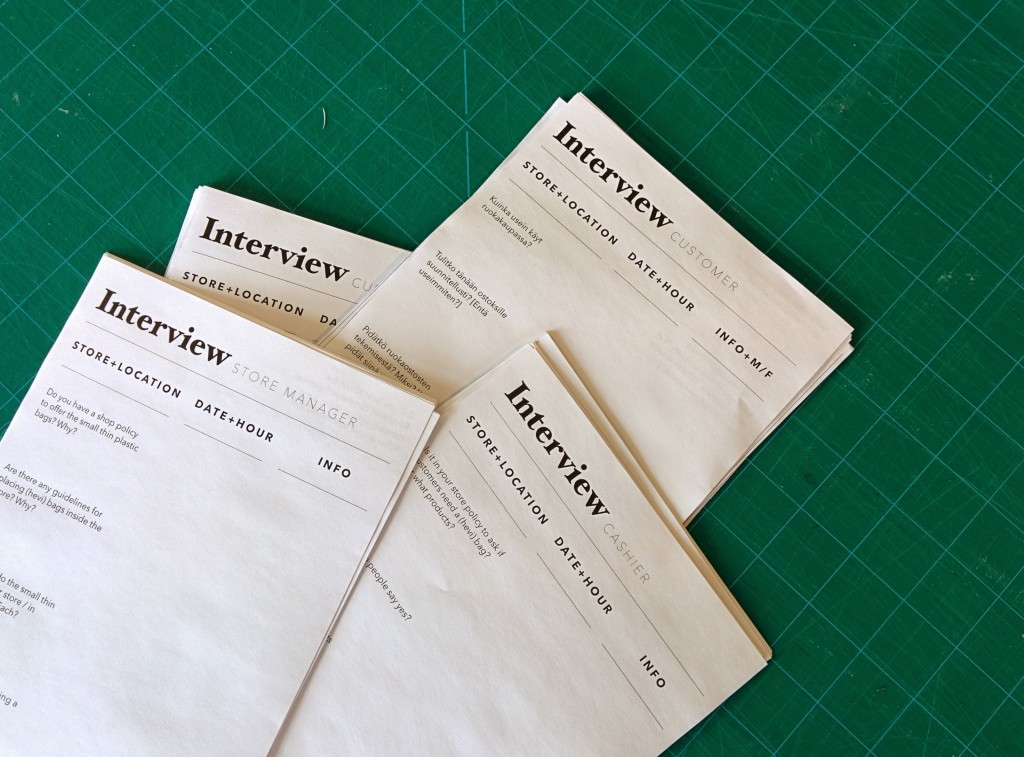
It was surprising how difficult and tiring it was to approach and interact with strangers even though most of them were friendly and cooperative. Being intensively present and building trust again and again was hard work for designers who are not used to that.
Research analysis
After collecting all available data the next step was to analyse it and make sense of the raw data; interview outcomes, numbers and observation insights. The aim of this was to create basis for ideas and prototypes. Design research data is often messy and digging out practical insights can be time consuming. In addition, it can be difficult to predict which analysing method is the appropriate one. We realized soon that there were no right options but rather “worse” or “better” alternatives.
At the beginning of the analysis, students had a quick reviewed of their own system maps in case there had been some changes or new stakeholders had emerged after the design research. After this a P.O.I.N.T. analysis method was applied to categorize the research findings. The idea behind the analysis is to externalize data into information and convert research context into readable and easy-sharing format.
After the P.O.I.N.T. analysis, the next step was to make meaning out of the information by creating affinity diagrams. Affinity diagrams are used to organize qualitative data clarify the totality by dividing the data into clusters of different themes. This helps the researchers to come up with opportunity questions that are based on each header.

Opportunity mapping is a way of describing key opportunity points for changing the system. It starts with asking right “How can we….?” or “What if…?”questions. Mapping these questions helps in developing new services or improving existing ones. Thus, it allows students to enter ideation and prototyping stages with sufficient information and insights.
Ideation Phase
After research and analysis, the data had to be converted in concepts through a condensed process so that each team would have at least some initial concepts that they could prototype and test, refine, then test again, and again, keeping them in close contact with the reality of the context.
An important direction given as an introduction to the ideation phase was to create a sense of urgency: in our projects we are essentially attempting to change established systems. According to Kurt Lewin’s model for organizational change, Change requires first of all a process of questioning the existing, of motivating the people involved in the system that there is indeed a need for change this is the Unfreezing stage. Once this is obtained, it’s time to create (co-create?) something new, acting to actually materialize the change: the Changing phase. Afterwards, the changes made need to be internalized and stabilized, so that the new system can sustain itself: the Refreezing phase.
The process of ideation itself was conducted in a speedy, condensed way, in line with the rest of the block, using some of the different ideation techniques available from sources like Mycoted.
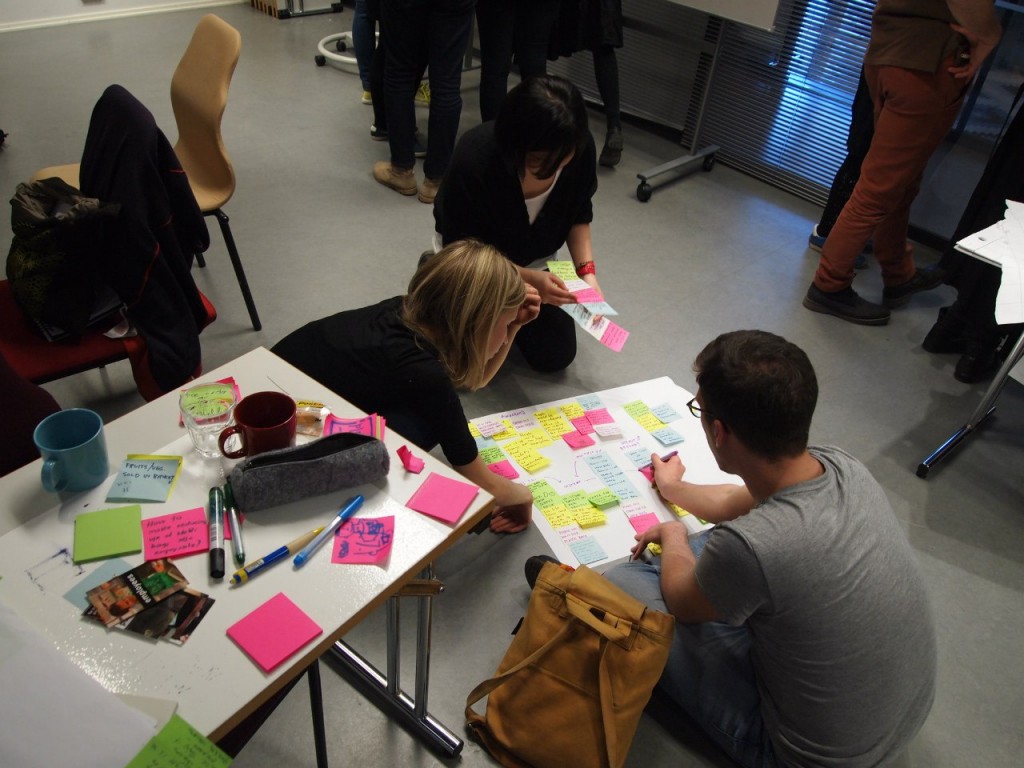
The ones we used in class ranged from the common Brainstorming, aimed at quantity and freedom of presenting wild ideas, to Snowballing, where a concept was started by one person and expanded by the following. A particularly interesting method is Profile Interviews: staged interviews where one team member pretended to be a specific profiled user and another one interviewed him on the issue, often leading to valuable insights.
Other methods included using a random word as a starting point for ideation, or Touchpoint Cards, and looking at the problem from the perspective of a specific person or organization: “How would Google deal with the accessibility of buildings?” or “How would my Grandma solve the problems of plastic bag littering?”

Review
Human centered design is all about empathic approach to the problem. After collecting data comes one of the most important phases –analysis with the question “What does data tell us about the problem?” It is important to understand the setting behind it. In the end we may find out that the brief we were dealing with was only consequence or symptom of the real problem which was lying somewhere else and was not visible at the beginning.The main question was: what are those real needs we were trying to find solution for? After defining the brief and doing research analysis, ideation for the solution began. It is the point where empathy intervened. We needed to place ourselves into the role of the future users and ask ourselves: Does our solution work in real life setting how we imagined it would? What’s missing? Would we use it?
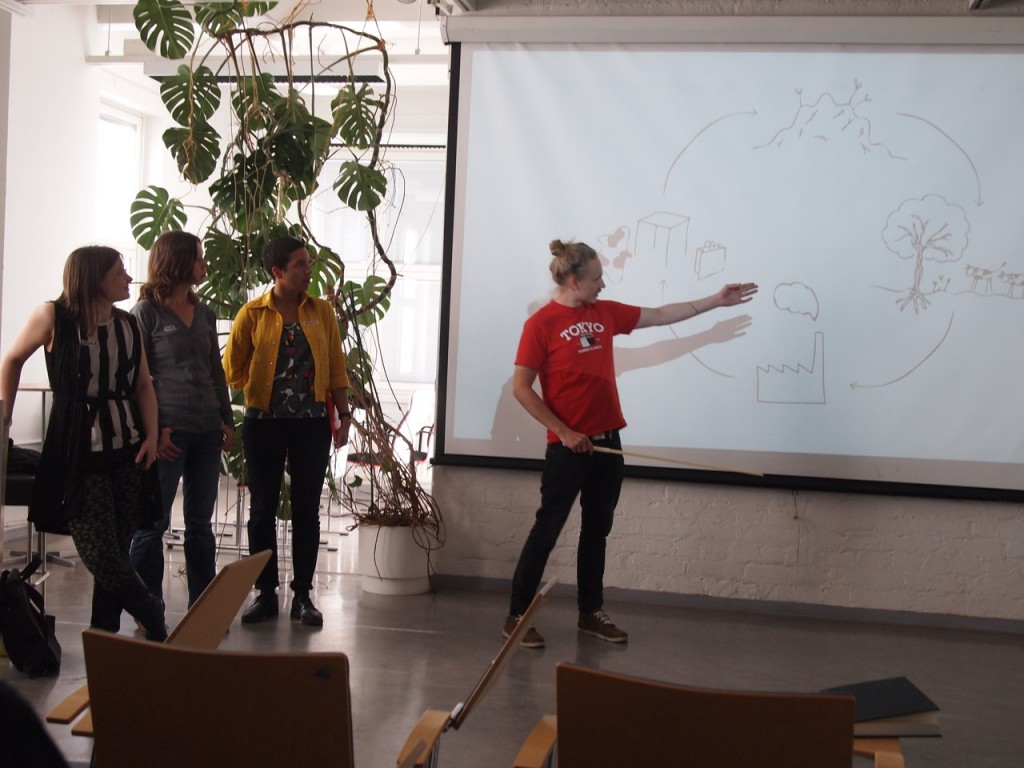
During the review of HCD block all 6 groups under two themes presented different concepts they had made according to the analysis of the data they collected during HCD field researches. Really good points were touched during the presentations, which showed us clearly that, in order to find good solutions, we need dig deeper into the problem. It seemed very interesting that many of the solutions presented would in reality be very hard to implement. But what Albert Einstein has said is very true: “We cannot solve our problems with the same thinking we used when we created them.” In other words, new approaches for systemic changes are needed.

